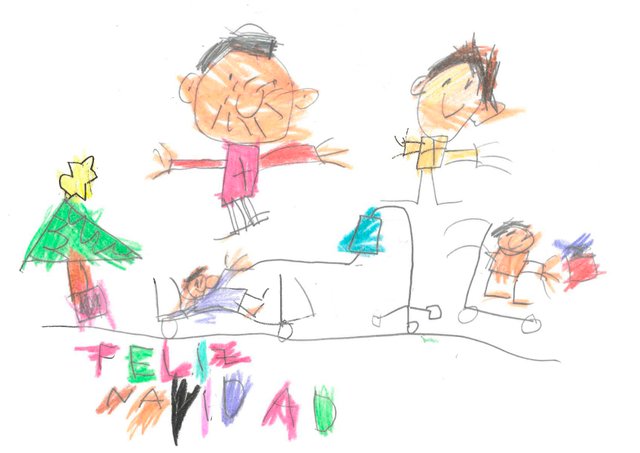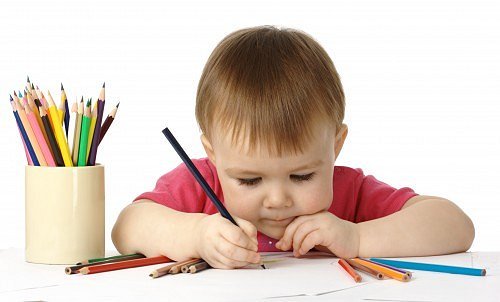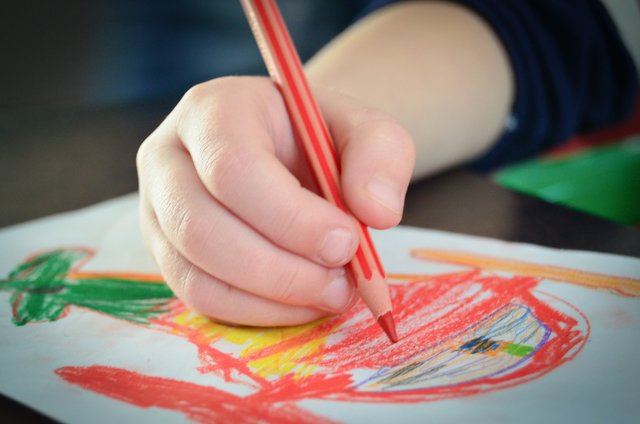it is important that children draw?
What to do when they do not like to draw?
A simple strategy is for the father or the mother to draw at his side so that he imitates him or that he proposes to draw between them: "you make the sun and I the clouds".
What should not be done is to ignore the fact that a child does not like to draw and consider it an unimportant aspect. The ability to express oneself in this way should be given as much attention as oral language or food.And the coloring?
The drawing and coloring are related. However, some children like to draw using only one color. In these cases, it will be important to motivate them before pressing them to color. To do this, you can prepare templates with various shapes of known objects with simple borders, so that they can be filled inside and also templates of the same so that they can be colored on the outside. There are also boys and girls who use "inconvenient" colors, such as the purple sun. No pressure should be exerted to change this, simply guide them little by little.What to do with the drawings?
Although it is advisable to keep them, often, the papers where the children draw are discarded. Because it is important to keep them: for two important reasons: first, that the children feel that their work is important for others, which will make him appreciate it, do it with care and, above all, build his self-esteem; the second, which will serve to measure their progress.
What do they communicate?
For the children who make a drawing, it has a specific meaning. By drawing a pair of stripes and a few circles they can be representing an event that happened at home, such as a party, a meal in the garden, a visit from a family member or any other episode. For this reason it is recommended that when the children finish their drawing, the parents talk to them about the meaning of their work, although never asking what it is, but indirectly and starting with questions like What do they do? ? Or where are they ?. Surely, each one will tell a story.
 This constitutes the beginning of the "production of texts", fundamental in its future development. Thus, the first manifestations of this aspect of language are the drawings; That is the importance of drawing. In these first scenes, the thoughts of the children will be organized and the same questions will be answered by others.
This constitutes the beginning of the "production of texts", fundamental in its future development. Thus, the first manifestations of this aspect of language are the drawings; That is the importance of drawing. In these first scenes, the thoughts of the children will be organized and the same questions will be answered by others.
Suitable materials
About the colors: The most convenient ones have soft wood and a resistant graphite mine, as thick as possible and in bright shades. As for its shape, there is agreement to indicate that the triangular favor the internalization of the correct pressure.
About crayons: Wax pencils are perhaps the most suitable for children, to the extent that their material glides smoothly on any surface. You should always prefer thick crayons and leave them, as far as possible, with the paper wrapper, as it gives resistance so that they do not break.
About the tempera: With the right brushes, thick and medium, this type of liquid paint awakens and encourages the creativity of the little ones. It is convenient to put at your disposal especially the basic colors (yellow, red and blue), so that they can make all kinds of mixtures
About the markers: The markers ink will always require special care and in fact will only be suitable for the larger children. However, as the important thing is experimentation, you should not deprive them. Especially the medium ones
Some recommendations
To stimulate the development of children through drawing, the following should be taken into account:
- Paste a large sheet of paper on a particular wall or on the floor to indicate it as the place to draw, to avoid reprimands for possible spots in inappropriate places
- To put at your disposal adequate materials for your age, in sufficient variety and quantity, to avoid classifying them.
- Prepare a space for "desktop" work, with small papers, and allocate clothes for the use of staining materials.




